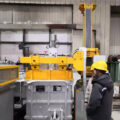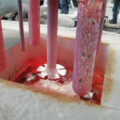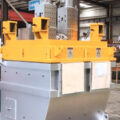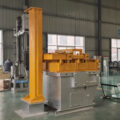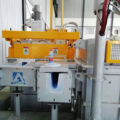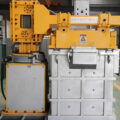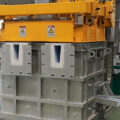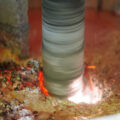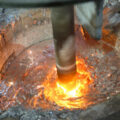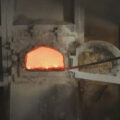At a typical aluminum melting temperature (700°C and above), water vapor decomposes into hydrogen and oxygen. Oxygen reacts with aluminum liquid to produce aluminum oxide. Hydrogen (H) decomposes into hydrogen atoms (H) and dissolves into the aluminum liquid. Therefore, it is inevitable to dissolve hydrogen in molten aluminum, and how much it dissolves depends on the humidity of the air. Since the solubility of hydrogen in molten aluminum is much greater than that in solid aluminum, pores will be formed in the crystal grain boundaries during the steep drop in temperature of the dissolved hydrogen during solidification. The pores in the metal are very harmful to the strength of the metal. In order to improve the strength of the metal, it is necessary to consider removing most of the gas when the metal is liquid. Therefore, online degassing is necessary for all liquid metal production.
Hydrogen removal can be removed by dispersing neutral gas (Ar or N) in an online degassing system and contacting molten aluminum. The best hydrogen removal efficiency is achieved by increasing the exchange area between dissolved hydrogen and molten aluminum, that is, reducing the size of the bubbles as much as possible.
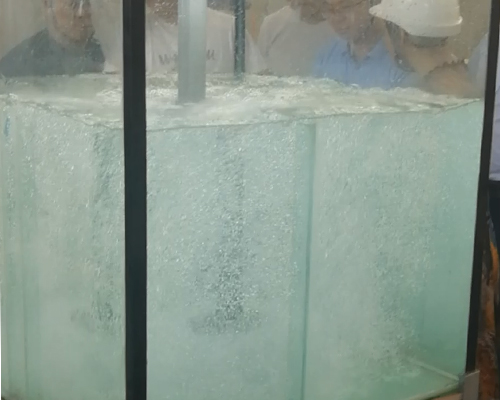
The hydrogen content and non-metallic inclusions of molten aluminum alloy in the melting and casting workshop will seriously affect the quality of castings. Usually during the condensation process, as the solubility of hydrogen decreases, it is too late for hydrogen to escape from the solution, and non-metallic inclusions are too late to float to the liquid surface before entering the crystallizer, which will cause plates and foils in the subsequent rolling process. The white spots and pinholes on the surface of the material increase, and the mechanical properties of the material decrease, which eventually leads to the scrap of the product. Therefore, the aluminum alloy melt must be degassed and purified.
The working principle of degassing for liquid metal is to use the inert gas that does not chemically react with the aluminum melt at the melting temperature, and is insoluble in the aluminum melt. It is sprayed into the aluminum melt through the high-speed rotating graphite shaft to form a large amount Continuous small bubbles. When the inert gas bubbles rise from the bottom of the melting chamber, because the hydrogen partial pressure in these bubbles is 0, the hydrogen in the melt will continue to diffuse to the bubbles until the partial pressure of hydrogen in the bubbles increases to match the concentration of hydrogen in the melt. Balance is reached when there is a certain relationship. After the bubbles rise to the surface, the hydrogen in the bubbles escapes into the atmosphere. In the process of bubble floating, when encountering non-metallic inclusions, the inclusions adhere to the surface of the bubble due to the effect of surface tension. These inclusions are removed as the bubbles rise. At the same time, in the filter cavity, the filter medium will further mechanically block the inclusions, so that the impurity deposits are blocked in the filter medium, so that the aluminum liquid can be thoroughly purified.

